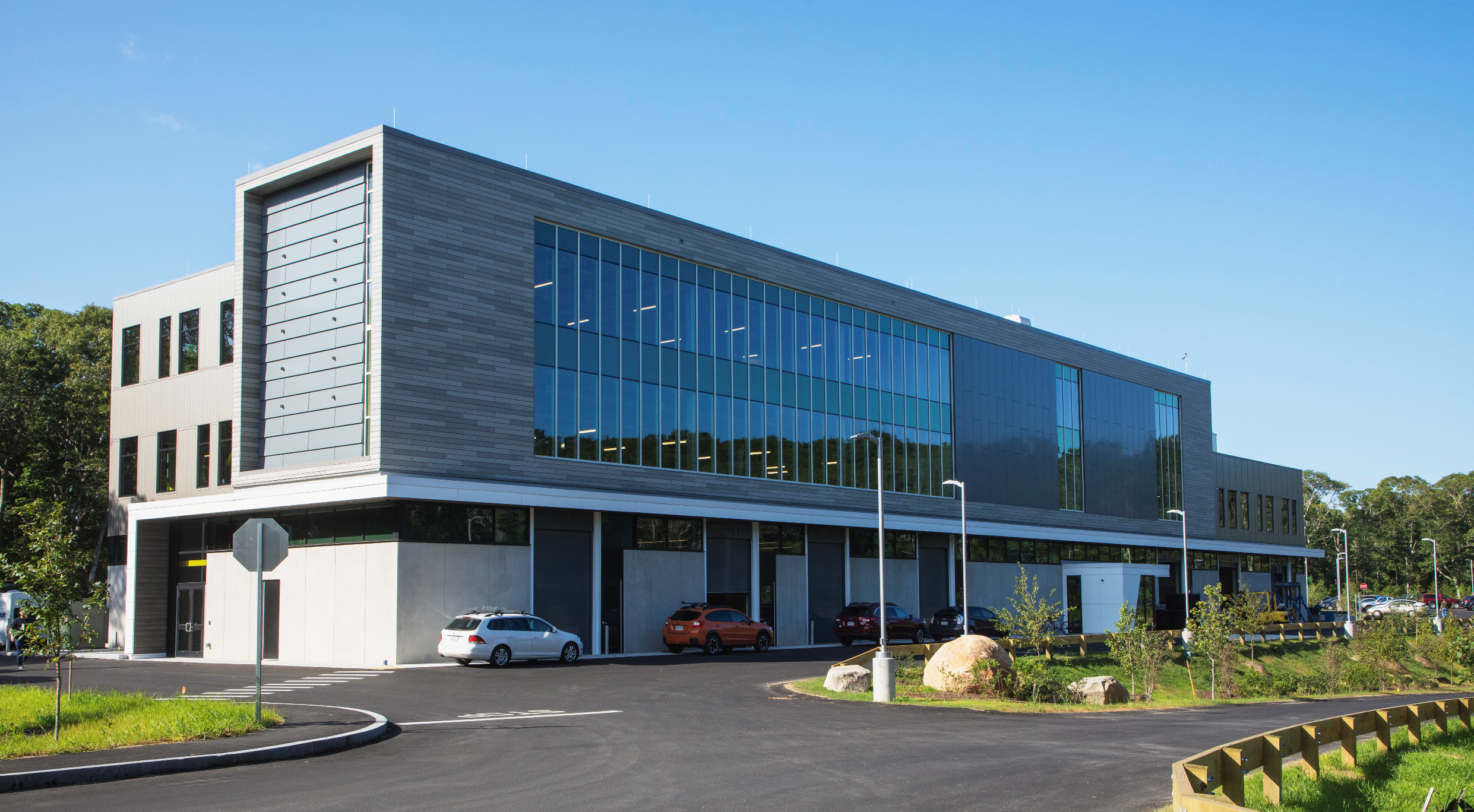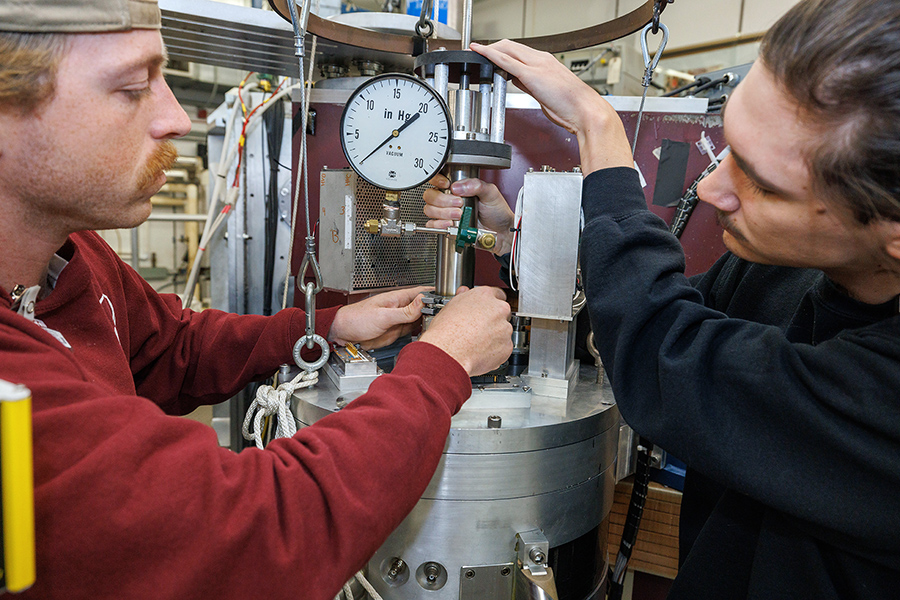The George and Wendy David Center for Ocean Innovation is a first-of-its-kind collaboration hub occupying the newest building on WHOI’s Quissett campus. It represents a significant investment in advancing WHOI’s capabilities in ocean technology, fundamental and applied ocean science, and innovation to address critical societal problems. The Center is named for former Chairman and Chief Executive Officer of United Technologies Corporation, George David, and his wife Wendy David, who committed $5 million to develop the facility and advance communications and education programs for future leaders in ocean science and technology. The 54,000 square foot facility is intended to bring ideas into action at a pace commensurate with global problems affecting the ocean, such as plastic waste, environmental degradation, and climate change. The facility is also home to WHOI’s AVAST (Autonomous Vehicles and Sensor Technologies) program, which fosters collaboration across disciplines and among global, state, and regional actors within industry, government agencies, and private philanthropies.
“The oceans are profoundly important to our planet’s well-being and future. We have not been kind to these oceans especially in the last century, and technologies and innovations offer us opportunities to reduce the impacts and even turn them back. This center for Ocean Innovation should lead the way. Wendy and I are delighted to be part of it,” said George David.
The establishment of the David Center for Ocean Innovation comes on the heels of two other announcements in 2021, both of which focused on innovation in the area of ocean and climate.
In April 2021, WHOI announced the establishment of the Francis E. Fowler IV Center for Ocean and Climate to seek new knowledge and new solutions at the intersection of oceanography and climate science. A generous gift from Francis E. Fowler IV established the center to explore and generate ocean-based solutions to climate change, including those identified by the High Level Panel for a Sustainable Ocean Economy.
Also in 2021, WHOI announced the formation of The Ocean and Climate Innovation Accelerator (OCIA), a first-of-its-kind consortium launched to generate new knowledge and accelerate solutions for climate change through a focus on our oceans. OCIA was established in partnership with Analog Devices, Inc. (ADI), who recognized the urgent need to focus technological development and advance understanding of fundamental ocean processes to understand and address climate impacts. OCIA is a consortium that enables members to collaborate with ocean scientists and engineers on critical ocean research, leverage each organization’s unique capabilities to address key climate questions, and fund world-class research into ocean/climate dynamics.
“The official opening this week of the new David Center for Ocean Innovation is building on considerable momentum to bring much needed focus to ocean innovation and accelerate progress in ocean science, technology, and education,” said Peter de Menocal, WHOI President and Director. “These three hubs for science and solutions development reinforce WHOI’s position as a powerhouse of new insights, new ideas, and new inventions focused on the health of our ocean and our planet.”
###
About Woods Hole Oceanographic Institution:
The Woods Hole Oceanographic Institution (WHOI) is a private, non-profit organization on Cape Cod, Massachusetts, dedicated to marine research, engineering, and higher education. Established in 1930, its primary mission is to understand the ocean and its interaction with the Earth as a whole, and to communicate an understanding of the ocean’s role in the changing global environment. WHOI’s pioneering discoveries stem from an ideal combination of science and engineering—one that has made it one of the most trusted and technically advanced leaders in basic and applied ocean research and exploration anywhere. WHOI is known for its multidisciplinary approach, superior ship operations, and unparalleled deep-sea robotics capabilities. We play a leading role in ocean observation and operate the most extensive suite of data-gathering platforms in the world. Top scientists, engineers, and students collaborate on more than 800 concurrent projects worldwide—both above and below the waves—pushing the boundaries of knowledge and possibility. For more information, please visit www.whoi.edu



